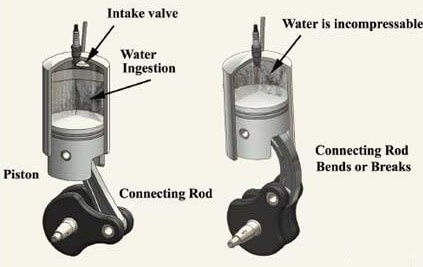Welcome to the deep dive into the intriguing world of Hydro Lock! This comprehensive guide will unravel the mysteries surrounding this phenomenon, its implications, and how to tackle it effectively. Whether you’re a car enthusiast, a curious homeowner, or simply someone intrigued by automotive mechanics, this guide caters to all.
What is Hydro Lock?
Hydro Lock, often referred to as hydrolock, is an automotive condition that occurs when an internal combustion engine’s cylinders fill with liquid—typically water. This condition can lead to catastrophic engine failure if not addressed promptly. The term itself derives from the combination of “hydro,” meaning water, and “lock,” indicating the engine’s inability to move due to the liquid obstruction.
How Does Hydro Lock Occur?
Hydro Lock can happen in various scenarios, but it commonly occurs in the following situations:
- Driving Through Deep Water: When a vehicle traverses a flooded area, water can be sucked into the engine’s air intake, leading to hydro lock.
- Coolant Leaks: A malfunctioning head gasket or a cracked engine block can allow coolant to leak into the combustion chamber.
- Heavy Rainfall: Inadequate drainage or high water levels can contribute to the risk, especially for low-sitting vehicles.
- Unsealed Engine Components: Older vehicles or poorly maintained engines might allow water ingress, increasing the risk of hydro lock.
Signs of Hydro Lock
Recognizing the signs of hydro lock early can save you from extensive damages. Here are some common indicators:
- Strange Noises: If your engine makes unusual sounds, such as knocking or grinding when trying to start, it might be a sign of hydro lock.
- Engine Won’t Start: A locked engine will resist turning over, making it impossible to start.
- Excessive Smoke: Water may be expelled through the exhaust, causing white smoke to billow.
- Warning Lights: Dashboard indicators may illuminate, signaling engine trouble.
What Happens Inside the Engine?
Understanding the engine’s mechanics can provide further insight into why hydro lock is so detrimental:
- Intake Stroke: During the intake stroke, the engine draws in fuel and air. If water is present, it enters the cylinder.
- Compression Stroke: The piston moves upward, compressing the air-fuel mixture. Water, being incompressible, creates a blockade.
- Power Stroke: The engine attempts to ignite the mixture, but the presence of water prevents normal functioning.
- Potential Damage: The force of the piston hitting the water can bend connecting rods, crack the engine block, or destroy the piston itself.
Preventing Hydro Lock
As the saying goes, “an ounce of prevention is worth a pound of cure.” Here are some proactive strategies to prevent hydro lock:
- Avoid Deep Water: Steer clear of flooded roads and understand your vehicle’s water fording capabilities.
- Regular Maintenance: Keep your engine in top shape with regular checks on head gaskets and seals.
- Upgrade Intake Systems: Consider high-performance air intake systems that have better filtration and water diversion capabilities.
- Use Water-Resistant Components: Invest in protective covers and seals for your engine components.
What to Do If Hydro Lock Occurs?
If you suspect hydro lock has occurred, immediate action is crucial:
- Do Not Attempt to Start the Engine: This will cause further damage. Instead, assess the situation.
- Remove Spark Plugs: This allows trapped water to escape from the cylinders.
- Crank the Engine: With the spark plugs removed, crank the engine briefly to expel water.
- Inspect for Damage: Check for bent rods or other signs of damage. Consult a professional mechanic if necessary.
Hydro lock, while potentially devastating, can be understood and even prevented with the right knowledge. By recognizing the signs, taking preventive measures, and knowing how to respond, you can protect your vehicle from this dangerous condition. Remember, the key to avoiding hydro lock is vigilance and maintenance. Stay informed, stay dry, and keep your engine running smoothly!
For further information or assistance, don’t hesitate to reach out to automotive professionals or local mechanics who can provide guidance tailored to your specific situation. Happy driving!

